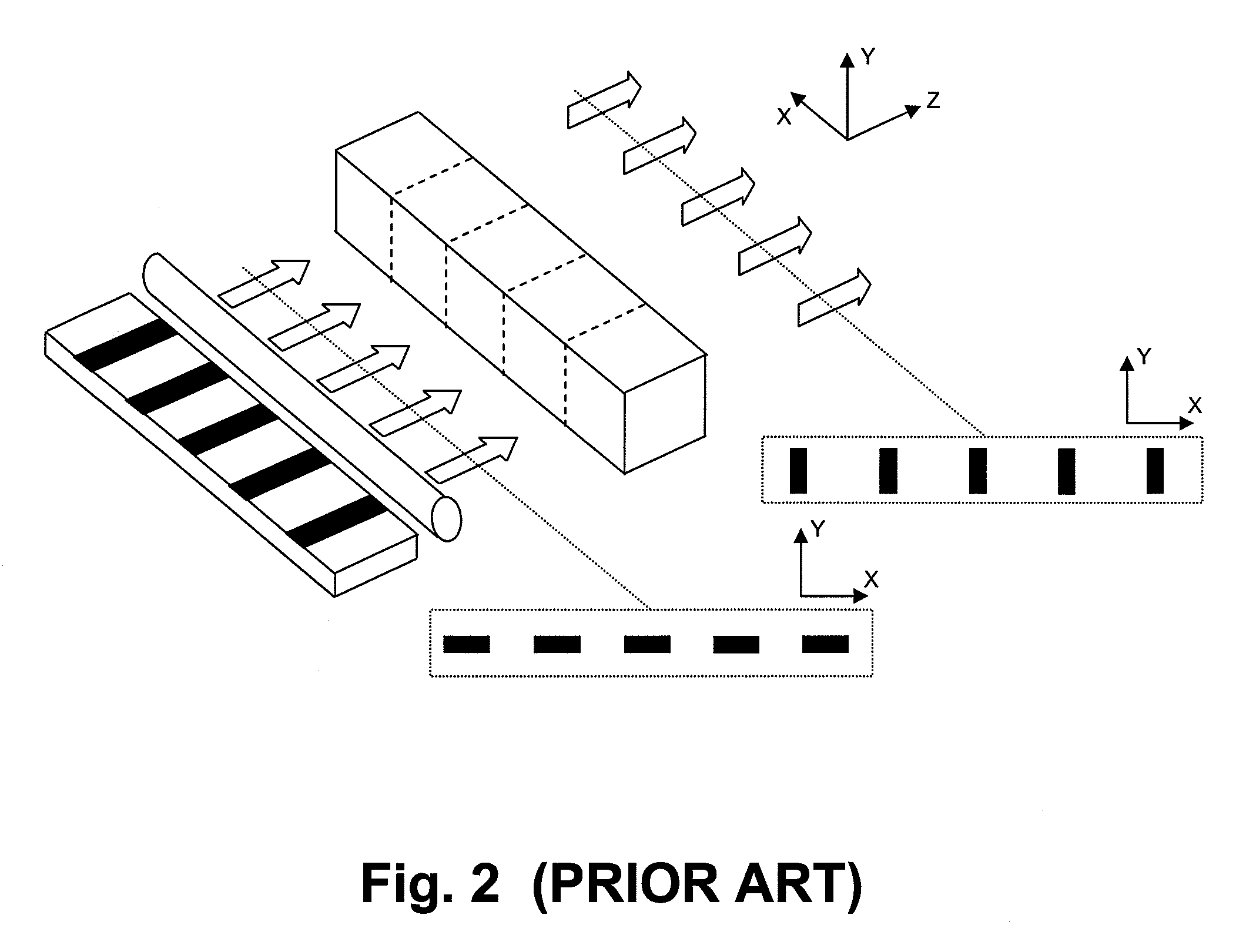Laser diode illuminator device and method for optically conditioning the light beam emitted by the same
a laser diode and light beam technology, applied in the field of laser illuminator devices, can solve the problems of insufficient use of beam symmetry devices, inconvenient use, and inability to meet the requirements of laser diode bar symmetry, etc., to achieve more efficient use, promote higher optical throughput, and compact
- Summary
- Abstract
- Description
- Claims
- Application Information
AI Technical Summary
Benefits of technology
Problems solved by technology
Method used
Image
Examples
Embodiment Construction
[0028]Reference will now be made in detail to the preferred embodiments of the invention. This invention may, however, be embodied in many different forms and should not be construed as limited to the embodiments set forth in the following description. The structure of a laser diode illuminator device 50 built in accordance with a preferred embodiment of the present invention can be better understood by referring to the schematic block diagram shown in FIG. 4. Note that each identical or nearly identical component that is illustrated in the various figures is represented by a like reference numeral. At the heart of the laser illuminator device 50 is a SLDA assembly 52 in which the total number N of stacked laser diode bars is large enough to fulfill the maximum laser output power requirement when the SLDA assembly 52 is driven at its nominal current rating. In practice, the N laser diode bars need not be stacked all in the same array, since the SLDA assembly 52 can be advantageously...
PUM
 Login to view more
Login to view more Abstract
Description
Claims
Application Information
 Login to view more
Login to view more - R&D Engineer
- R&D Manager
- IP Professional
- Industry Leading Data Capabilities
- Powerful AI technology
- Patent DNA Extraction
Browse by: Latest US Patents, China's latest patents, Technical Efficacy Thesaurus, Application Domain, Technology Topic.
© 2024 PatSnap. All rights reserved.Legal|Privacy policy|Modern Slavery Act Transparency Statement|Sitemap



